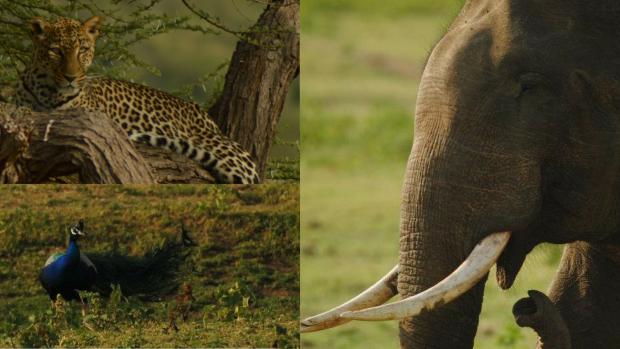
Photo : Purabi Deshpande / Research Matters
May it be the Hindu deity Ganesha, or the troop of bonnet macaques raiding urban settlements, wildlife has a great impact on India’s culture and way of life. India belongs to one of 17 megadiverse countries of the world, the countries which are home to a majority of the world’s species. Its forests, mountains, deserts and seas are home to 7.6% mammals, 12.6% birds, 6.2% reptilian, 11% fishes and 6% flowering plants of the world. A large majority of such flora and fauna are only found here! Four of the world’s thirty five biodiversity hotspots are in India -- the Western Ghats, Eastern Himalayas, Indo-Burma region and Nicobar islands.
But today, we are at a risk of losing such great diversity due to anthropogenic or manmade problems. Climate change, encroachment and poaching are some of the biggest challenges our wildlife faces today. To celebrate our unique wildlife and raise awareness for its conservation, India just celebrated the Wildlife Week from 2nd October until the 8th October. An annual event that started since 1952, the week gives us an opportunity to review and understand some of the threats that wildlife in the country faces, and possibly reflect on how we could, as citizens, play a role in helping the situation.
But how big is the threat we are talking about? The forested land in India has drastically reduced in the last century; the Western ghats alone has lost 35% of its forests. As a result, wild fauna has taken a big hit as well. While India has miraculously been able to save some species from extinction thanks to various management initiatives, even the slightest setback in this process poses a big threat to survival of the species. About 19 lakh hectares, or more than two per cent, of the forest area in the country is under encroachment.
But a remarkable threat of all is poaching. Numerous pangolins, tigers, leopards, elephants and other birds and animals have been victims of poaching, or the act of illegally hunting or catching animals on land that is officially protected. But what makes these animals most sought after? It’s their magnificent body parts -- skin, bones, tusks, horns, etc. Poaching diminishes the population of animals in a given area; impacting not only the species survival, but also the long term sustainability of the ecosystem.
While the Indian pangolins are the most poached animals in India, the Bengal tigers and the Indian rhinos are not far behind. Tiger bones and rhino horns are used in the preparation of unscientific traditional medicines that promise to cure everything from epilepsy and liver problems to baldness and nightmares. Such superstitions fuel the rising poaching figures in India.
120 tiger death were recorded in 2016, a 25% increase from 2015, and as of this June, 67 tiger death have been recorded this year alone! The story of rhinos of Assam are no different. It was found that poaching had lead to the death of 22 rhinos in 2016 alone.
So how do we solve a multidimensional problem of poaching that has far fetching consequences on the socioeconomic factors of a country and also its ecology? Technology might be the saviour. Across the world, conservationists are continuously trying new strategies to counter poaching through innovative technologies.
This year, the Corbett Tiger Reserve administration has decided to implement an ambitious project to keep an ‘eye’ on its forests. They have decided to set up cameras in core areas of the reserve, which relay the video in real time to smartphones on demand A mobile application called ‘M-stripes’ would be developed for forest personnel to undertake surveillance and prompt action, to completely prevent poaching. The project is said to cost around 4 crore and will be completed in over a year.
Earlier in 2012, a two-phased project was undertaken by the Wildlife Institute of India, Dehradun, to genetically profile tigers initially in 14 reserves and then to cover 34 reserves. Genetic profiling of animals is crucial to not only to understand population dynamics, but also to investigate poaching cases. Seized tiger bones and pelts can also be genetically profiled, to determine their source, leading to convictions and better management.
An ingenious technique, the Rhino DNA Index System (RhODIS), to collect DNA samples from rhino’s horn, blood and other tissue of rhino were developed in 2010 and a widespread implementation was undertaken in South Africa. Currently, the database has genetic profiles of 3,00,000 rhinos, and this project has led to successful convictions of at least six high profile traffickers, and the successful tracking of the source. A unique collaboration forged between conservationists in South Africa, the Wildlife Institute of India, Dehradun, World Wide Fund for Nature (WWF) and the state governments of Assam, West Bengal and Uttar Pradesh that have rhinos, may soon have the system implemented in India too.
The constitution protects our wildlife in the form of numerous laws. But without convincing evidences, poachers walk free and indulge in more poaching. However, with such DNA based evidences, going scott free may be a thing of past. With ever increasing threats to our forests and wildlife, it’s time we look at how technology can help save the future and result in zero poaching.
